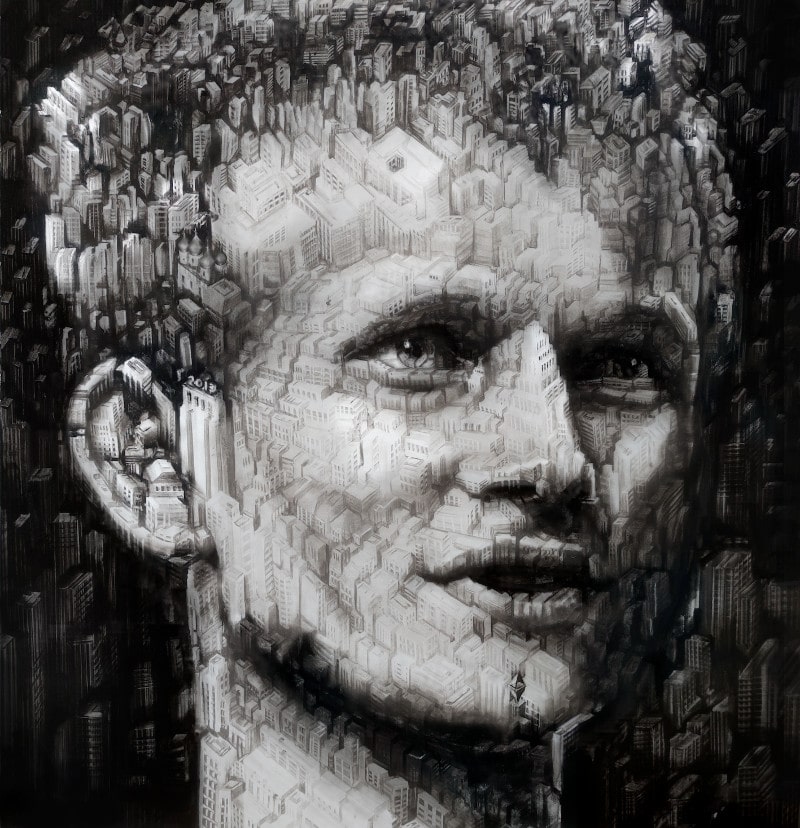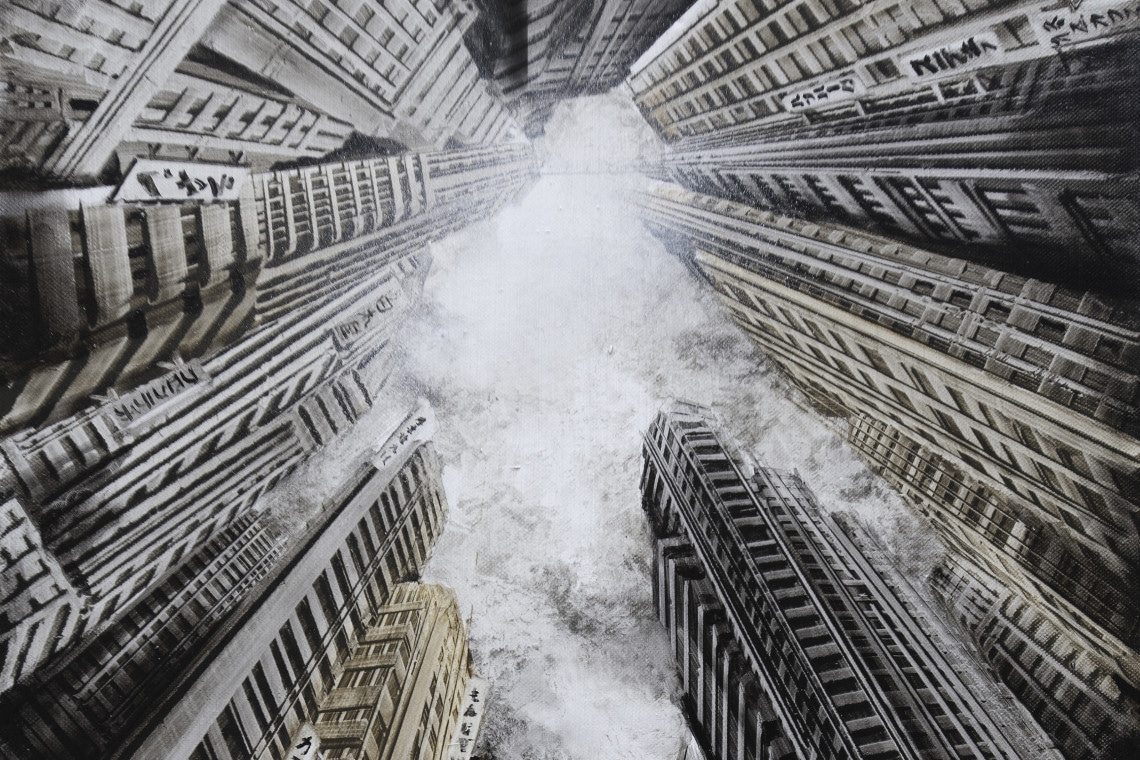He is considered to be one of the Italian pioneers of crypto art, but like other NFT artists he comes from traditional oil painting. Fabio Giampietro, born in Milan in 1974, has for years painted immense megalopolises seen from above, proliferating urban organisms that seem to have come out of the dystopian fantasies of a William Gibson novel.
His paintings are rooted in the tradition of Futurism and early post-war Italian Aeropainting and in the spatial research of Lucio Fontana. An Italian DNA that combines cyberpunk imagery and a passion for technology, which has characterized his artistic investigation for almost a decade.
Summary
His career
Giampietro began his career painting images of abandoned amusement parks, pieces of industrial archaeology and Non-Places, as Marc Augé would call them, with a melancholic charm. His source of inspiration was the architecture of Coney Island, in New York, where the first Luna Park in history was born, a place of undoubted charm that would appeal to postmodernist theorists such as Robert Venturi and Colin Rowe.
From those early visions, already characterized by a strong chromatic reduction, came the paintings dedicated to New York, the ideal model of the futuristic city that would later be supplanted by the new Asian megalopolises. His is a New York seen from above, almost from a bird’s eye view, with a dizzying glimpse of the city’s orthogonal grid. It is no coincidence that Giampietro calls these works “Vertigini”, referring to the frightening disorientation generated by the height of the skyscrapers.
A sensation that, among the first in Italy, he managed to transfer into VR with the installation Hyperplanes of Simultaneity, made with Oculus Rift technology and exhibited in 2016 in the Sala degli Arazzi of Palazzo Reale, in Milan. With this work, created together with Alessio De Vecchi (artist and chief-curator of SuperRare), he won the prestigious Lumen Prize, the most important award in the field of artworks created with technological means. Hyperplanes is not only the three-dimensional and synaesthetic translation into a virtual environment of one of its megacities, but above all a cognitive experience, which on the one hand allows the visitor to experience at first hand a realistic impression of paralyzing vertigo, and on the other gives him a vision of an artificial but credible world, an enveloping universe that preserves the signs and traces of the painting from which it originates.

Fabio Giampietro’s style in NFTs
One of the characteristics of Fabio Giampietro’s crypto works is the desire not to betray the analogue origin of the image, leaving the pictorial grain unaltered. Each work is based on a large oil painting, the image of which undergoes a digitization process that produces a static work or a short video.
Fabio Giampietro’s research can be said to be ubiquitous, in the sense that it lies on the borderline between the concrete world of paintings and the immaterial world of NFTs, examples of which can be seen on the SuperRare marketplace. Giampietro has even organized and co-curated, together with Skygolpe and An Rong, an exhibition on this concept of phygital art entitled Un-realism, which last July involved artists such as Hackatao, Federico Clapis, Luna Ikuta, Gary Cartlidge, Jesse Draxler and others, who have been key players in the transition from physical to digital art.
In Fabio Giampietro’s NFT works, all of which, with a few rare exceptions, play on the chromatic range of whites, blacks and greys, the city is a dynamic organism, which spreads in the vertical thrust of the buildings and skyscrapers and in the horizontal extension of its urban plans, which can even take on anthropomorphic forms. As in the case of the Metromorphosis series, where the faces of famous people – such as Alan Turing, the English mathematician who deciphered Nazi ciphers in World War II, or Vitalik Buterin, the Russian programmer who invented Ethereum – emerge in an illusionistic manner from the urban grid of his painted megalopolises.
Cities that hide a handful of Easter eggs, symbols or objects linked to the character’s biography, scattered throughout the dense web of buildings, challenging the observer to a meticulous search, halfway between a videogame and a treasure hunt.




